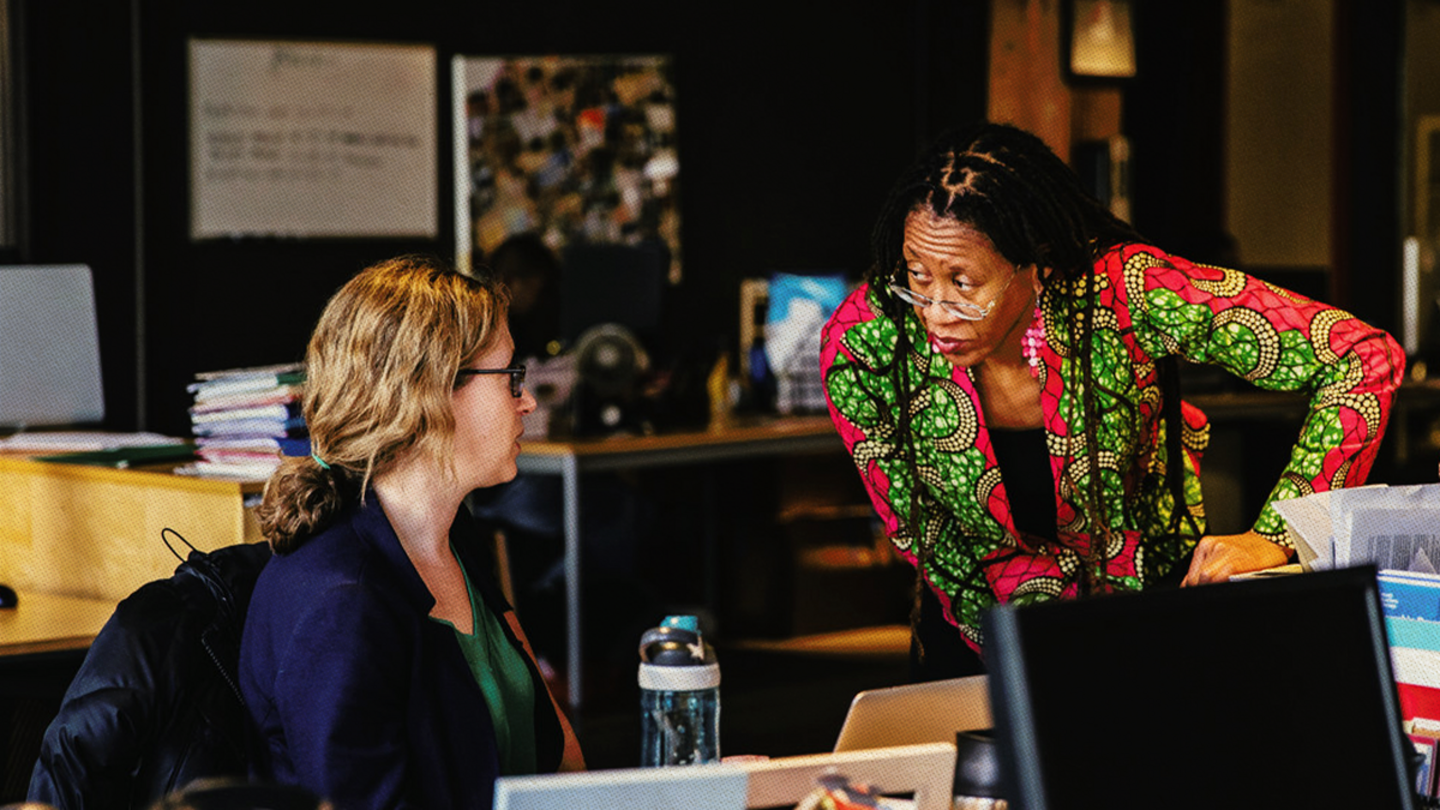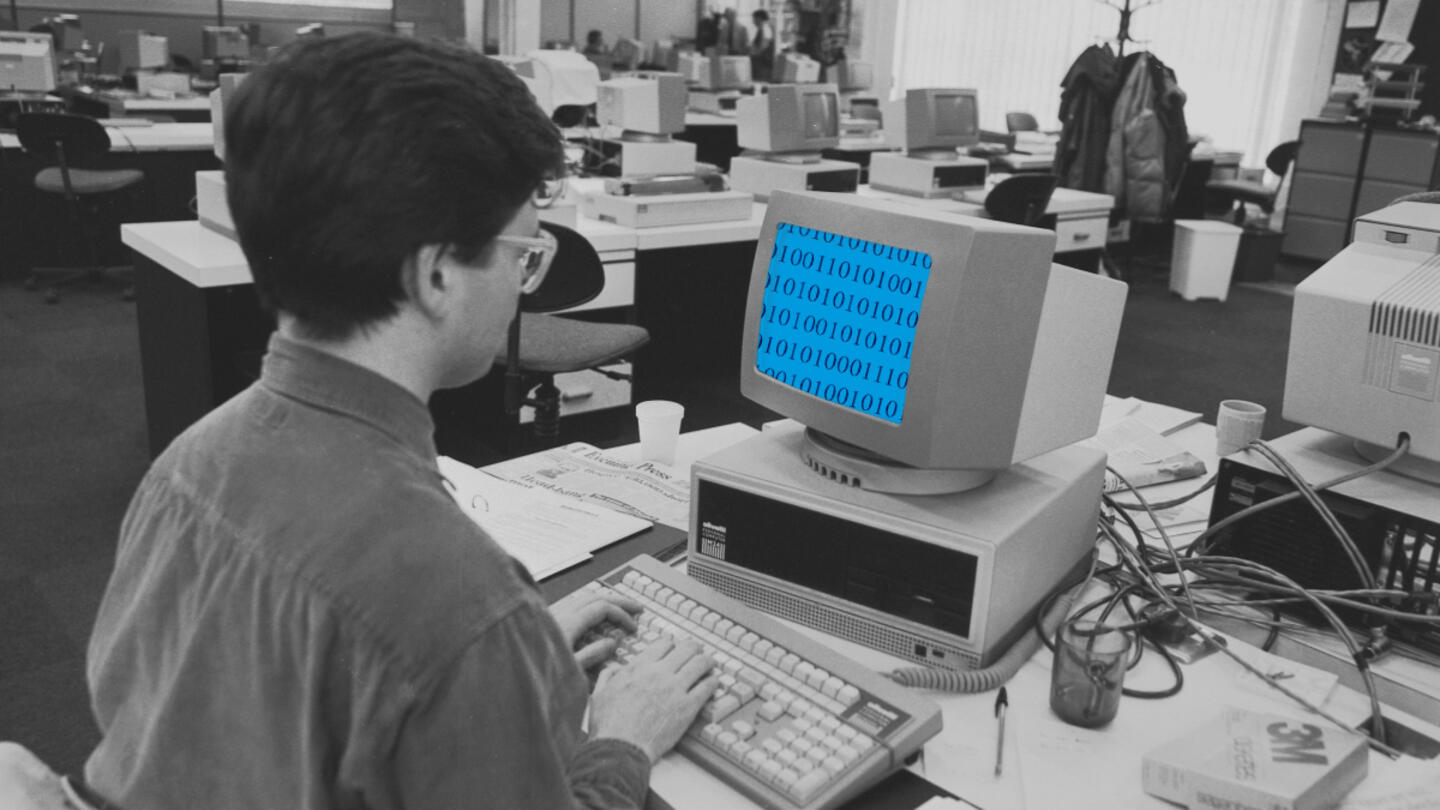During the recent writers’ strike in Hollywood, there were many signs decrying unfair working conditions for independent contractors — but one in particular struck a chord even for those outside the film industry: “AI can’t take our jobs.”
This is a common fear. We speak to business leaders and social entrepreneurs every day, and many echo the discomfort and fear that artificial intelligence will upend entire industries, putting whole professions out of work.
Andy Tonsing, Stand Together’s vice president of Future of Work, has a surprising reminder for us: “None of this is new. All novel technologies when introduced follow a similar pattern.”
“If you look at every massive shift, whether it’s the internet or the Industrial Revolution, ultimately there’s a transition in which some people lose their jobs. However, these changes also have the potential to create more jobs that are different and allow us to be more human,” Tonsing said. “There’s no reason to think AI is any different. How companies embrace the change made possible by AI will determine a lot of how this plays out.”
AI is poised to significantly transform up to 60% of jobs. However, only 25% of companies have incorporated AI into their daily functions. It can also turn low-performing workers into high performers by raising their productivity and allowing them to focus on tasks that require more creativity and innovation.
“The ceiling for growth and experimentation is huge,” Tonsing said. “If companies don’t get at the forefront of this, it’s going to happen to them rather than by them. Nobody knows exactly what the change will look like, so there’s a huge upside opportunity that has yet to be shaped. While we’re still figuring that out, we can craft what that future looks like as opposed to being reactive or protectionist.”
Here, Tonsing shares what organization leaders should keep in mind when understanding the opportunities and risks of AI and how to use it to advance their goals.
Advice: Cultivate an abundance mentality when it comes to AI
Stand Together: How can leaders get out of the mentality of fear and into one of abundance?
Tonsing: On the one side is the idea that robots will take our jobs and entire functions or job classifications will become obsolete. That’s the fear-based mentality.
On the other side, you have the abundance mentality, which is rooted in optimism around innovation.
If I work in a customer service call center and I’m handling complaints, AI will be good at addressing the normal things, like “Have you tried restarting your device?” But it’s not good at edge cases that require human ingenuity, creativity, or connection.
Where AI can really be helpful is to provide a base around which to build originality, customization, and focus. It enables people to craft new jobs that are more innovative and allow them to more fully employ their human capacities.
There’s a lot of uncertainty around AI, but it’s a unique technology in that the barriers to entry are low. People can easily play and experiment with it.
Business leaders don’t yet know exactly how it’ll play out in their companies or impact their talent needs. Many are bringing a mentality that it will replace entire departments like previous waves of automation. The risk in approaching it that way is that it misses the technology’s true potential to augment and empower people.
Employers could view it as “We don’t know what it’s going to look like, but we do know it’s going to enable us to be more human. We see its potential to elevate our workers. So, how do we build a culture of experimentation to leverage it as an augmentation and empowerment tool, as opposed to assuming it fully replaces workers?”
This early stage in the technology adoption curve is really important. You can take an abundance mentality around it, or you can take more of the deficit angle. We’re going to need solutions as a society to look at it as less of a zero-sum type approach.
Advice: Use AI to help in the hiring process
How can AI be leveraged to help in workplace recruiting?
AI brings the potential to create career opportunities for people facing labor market barriers. It is already being used by companies to identify and match job candidates to open roles.
Some people worry that algorithmic bias will reinforce existing system barriers within the job market. However, what this fear-based mentality overlooks is that it’s easier to de-bias an AI tool than a human. For example, Amazon applied an algorithm to predict successful talent recruitment, and it was biased heavily against women. But once you’ve identified a blindspot, you can intentionally optimize the AI to remove it. That’s much harder to do with humans.
Advice: Encourage employees to experiment with AI, then monitor the successes and failures
How can AI encourage more creativity and innovation among workers?
While AI can do a lot, there are fundamental things that it can’t do. It can’t inspire people. It can’t deliver originality or creativity to the level that’s going to help a business succeed. So how do you figure out how to use AI in a way that allows people to do more of these?
You can take an experimental, worker-first approach, which says, ‘We don’t know exactly what an AI-powered future looks like, but we’re not going to take the risk-averse approach. We’re going to take the abundance approach and say, ‘We’re going to encourage people throughout the organization to use AI in different ways. We only ask you to share the results of that work.’
This will help businesses shape the future of innovation from the bottom up through a strategy that empowers people. It also builds trust from wary workers who worry that AI threatens their livelihoods. By experimenting with it and having real input into how it is used, they become more likely to embrace change.
Advice: Provide training on AI literacy to employees
What are AI-related risks that workplace leaders should be aware of?
Sign up for Stand Together's Rethinking Work & Learning newsletter to get the latest stories, ideas, and trends on the future of employment.
The early phases of technology adoption always pose risks in people using it in inappropriate ways without taking into account its limitations or unintended consequences. The same is true for AI. While encouraging a culture of experimentation, people also need to be supported and trained to use it wisely.
One area of risk is around data use. Companies need policies and systems that protect data privacy so they’re not inadvertently handing information over to AI programs over which they have little control.
Businesses also need to train their workforce on AI literacy. People can’t just trust what comes out of it. It is well documented that AI can hallucinate and produce information out of thin air. While the technology is improving, workers must be trained to do due diligence on insights that AI produces and ensure the veracity of the information that it produces.
Another point to be wary of is that more organizations are now focused on leveraging AI to manipulate and optimize search results.
Advice: Look to other companies’ success stories as guidance
What are some examples of workplaces that have managed to use AI successfully?
My favorite case right now is IKEA. It looked at its customer service department and found that AI was able to answer 80-90% of the most common customer complaints and questions.
What does that mean for the customer service department, right? Some of those people are going to stay on, and they are now engaging more deeply with the customers who have the harder-to-solve problems.
IKEA took an empowerment approach to AI transformation and looked at the people in that department and said, ‘How can we leverage your knowledge of the company and your passion for this work into jobs that are more human and more fulfilling?’ They upskilled a lot of people in the department to serve as IKEA consultants.
People come in and say, ‘Here’s my vision for what I want for my home.’ And then the consultants put together a recommended interior design plan for using different IKEA furniture and products.
A lot of the customer service people went from answering the same calls day after day to doing very customized, high-value, and creative experiences for customers that were more fulfilling and provided more value for the company. So I think companies can take approaches like this and really think about the long-term value of the tools.
Advice: Have an optimistic outlook rather than fear-based risk aversion
Finally, what reason do we have to be excited about AI — not afraid of it?
The real winners of the AI revolution will be those who see it as a tool to augment and empower them in their work.
One study shows that for really high-performing workers, AI doesn’t help very much. They know what they’re doing. But for low-performing workers, it raises them to a high-performing status.
So if I’m a worker looking at this, it allows me to have a better career trajectory, improve my performance, find work that’s more fulfilling, and leverage originality in ways that I didn’t have the time or capacity to do before. That’s why this could be really exciting. It allows us to be more flourishing human beings in the work that we do.
Learn more about Stand Together’s efforts to transform the future of work and explore ways you can partner with us.

Lessons learned from Colorado.

Could a program built to develop music talent change the way we think about education?

How to help the talent of today fill the jobs of tomorrow.

Apprenticeship degrees enable teachers to earn credentials without putting their lives on hold.
